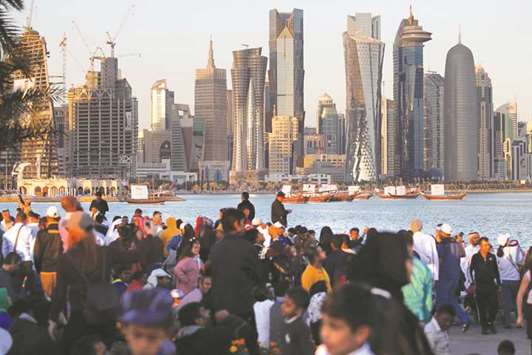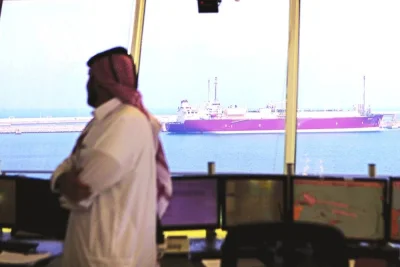Qatar’s “prudent” approach to 2018 budget planning is “credit positive”, Moody’s Investor service said, noting it “reduces the risk of fiscal slippage” that would increase the government’s debt burden at potentially higher costs.
Moreover, Moody’s sees “upside potential” for Qatar’s revenue in 2018 based on its higher oil price projections. The 2018 state budget increases total spending by 2.4% year-on-year to QR203.2bn.
The lion’s share of total spending (QR97.5bn or 48%) will be allocated to capital expenditures, including QR11.2bn for projects related to the 2022 FIFA World Cup.
Spending on wages and salaries is expected to grow the fastest at 8.8% and reach QR52.2bn while the rest will be allocated to other current expenditure. This is broadly in line with Moody’s projections of total government spending of QR205bn (around 32% of GDP) in 2018, although it is assuming a slightly higher share in current spending.
On the revenue side, given the unchanged oil price assumption from the 2017 budget, next year’s budget foresees hydrocarbon revenues increasing only marginally by 2.3% to QR133.1bn, on account of slightly increased gas production.
Together with 4.9% growth in nonhydrocarbon revenue, the total government revenues are projected to reach QR175.1bn, up 2.9% from the 2017 budget. These projections are more conservative than Moody’s forecasts of total revenue of QR207.3bn. The 18% difference between Moody’s and the government’s projections stem from the former’s assumption that oil prices will average $54 per barrel next year, 20% higher than oil price budgeted by the Qatari authorities.
Therefore, the rating agency forecasts a small fiscal surplus of QR2.3bn (0.4% of GDP) in 2018, compared to the authorities’ estimate of a QR28.1bn (4.4% of GDP) deficit.
While this will also mean smaller financing needs than suggested by the government budget, Moody’s still expects the government to access international debt capital markets in 2018 to refinance $2bn of sukuk maturing in January, and to build up its foreign exchange reserves.
According to preliminary data, total revenues during the first nine months of 2017 reached 70% of the budgeted QR170bn. While hydrocarbon revenue performed relatively well (74% of the budgeted amount for 2017), the performance of non-hydrocarbon revenue has been weaker (only 57% of budgeted target), most likely due to the negative economic impact from the ongoing diplomatic dispute in the region.
Total spending reached 74% of the annual target of QR198.5bn. Current spending execution – particularly on wages and salaries – was very high at around 85%, while capital spending was only around 62% of the full-year budget.
The budget approved by His Highness the Emir on December 12 uses a conservative oil price assumption of $45 per barrel and projects a marginal reduction in the fiscal deficit despite increases in spending compared to 2017.

People take part in Qatar National Day celebrations at the Doha Corniche yesterday. The 2018 budget increases total spending by 2.4% year-on-year to QR203.2bn.



